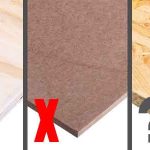A Woodworm infestation can cause big problems in your home. They need the correct environment to thrive, but when they do, they have the potential to spread. Among other things, dampness in your timbers can encourage this.
If you’ve discovered an infestation, then you’ll need to act. Woodworm can spread quickly in the right environment, although it’s not always guaranteed. However, leaving them untreated for any period is a gamble.
These woodboring beetles and their larvae, love eating wood. If left untreated, they could spread throughout your home. The faster they spread, the more problems they create. This can also make it more difficult to treat.

Can Woodworm Spread Quickly?
There are several different species of woodworm beetle. Some might spread faster than others depending on the environment. This can mean the type of wood in your home and whether there is damp present.
Different species of woodworm can behave quite differently. Some prefer wood that is damp. Others prefer hardwood while others might prefer softwood. Whatever type of woodworm infestation you have, you need to prevent it from spreading. Some of the different types of wood boring insects found in the UK include:
- Common Furniture Beetle – Usually prefers softwood
- Deathwatch Beetle – Prefers hardwood and timber suffering from damp
- Powder Post Beetle – This is known to attack hardwood
- House Longhorn Beetle – Only attacks softwood
- Wood Boring Weevils – Tend to prefer softwoods and rotting hardwoods
Even though it is possible for woodworm to spread quickly, it’s not always the case. There are some reasons why woodworm won’t spread quickly.
Sometimes depending on the species, they will not always seek out new timber. However, they are more likely to infest other timber if it provides a better environment. This can include timber that has more moisture.
How Can You Stop Woodworm From Spreading?
There are several options available to stop the spread of woodworm. One thing to consider is the woodworm lifecycle. Most of the damage they cause takes place when they are young larvae. They’ll be hidden and out of sight. During this time, they can spend as long as five years eating your timbers from the inside. So, it helps to understand the life cycle.
You might notice exit holes present in the timber, but these aren’t a sure sign that the infestation is active or not. Many believe that the holes mean the infestation has gone. What it does mean, is that woodworm have been present, and they could be attacking other surfaces. At this point, you should consider carrying out treatment.
Another thing you can do, is to check for dampness. The Woodboring weevil and the House Longhorn Beetle, both love softwood that is damp. If you have damp, fixing the problem could help to reduce the risk of infestation and reduce the chance of it spreading.
If you’re confident you do have an infestation, then fixing it quickly is advised. You can use a high quality, low odour boron-based liquid pesticide. This can be applied to the infected area. You can also place fly traps in rooms with poor ventilation. These could catch beetles when they emerge. There are also DIY woodworm killer solutions. You can see one of the most popular by clicking here.
Should your infestation be severe, or it has attacked delicate wood or furniture, then professional treatments can be used. This will use certain gases that can help to remove the entire lifecycle. This will include eggs and larvae in a safe way.
The Best Natural Treatments to Stop the Spread of Woodworm
There are some natural options available to treat woodworm infestations. These include:
White Vinegar – White vinegar along with lemon juice can be sprayed on wooden surfaces. This can be used on timber that has been infested but can also be used to prevent infestations.
Fresh Acorns – Woodworms are attracted to the smell of acorns. Take several acorns and place them in a cloth near wooden surfaces. The woodworms could lay their eggs on the cloth. The larvae will then enter the acorns for feeding. Once you see the signs of woodworm, you can remove and discard of them.
Mint and Lemon – Creating a mix of mint and lemon can work. Spray it onto wooden surfaces to help protect them. It will need to be infused over heat, but once cooled, it can then be used on surfaces.
Boric Acid, Ginger and Water – A mixture of boric acid, ginger and water could also give good results. Create a mixture and brush it onto surfaces and even place it into exit holes. It’s believed that this mixture will kill the larvae when they eat it.
Lavender, Clove, Rosemary and Essential Oils – You can create a mixture of these ingredients. This can be sprayed on wooden surfaces or injected into exit holes. The unpleasant odour could force woodworm out of your timbers.
Conclusion
Woodworm infestations have the potential to spread quickly. This is dependent on the type of beetle. However, it’s also dependent on the environment too. Provide the right environment such as damp, and they can spread rapidly.
If you notice an infestation, it’s time to act. There are DIY products available as well as professional treatments and natural treatments.
As with most things, prevention is better than cure. So, keep your timbers dry, avoid dampness and ensure the space has a good flow of air. Finally, regular inspections allow you to act quickly once you find an infestation and that can stop the spread.




